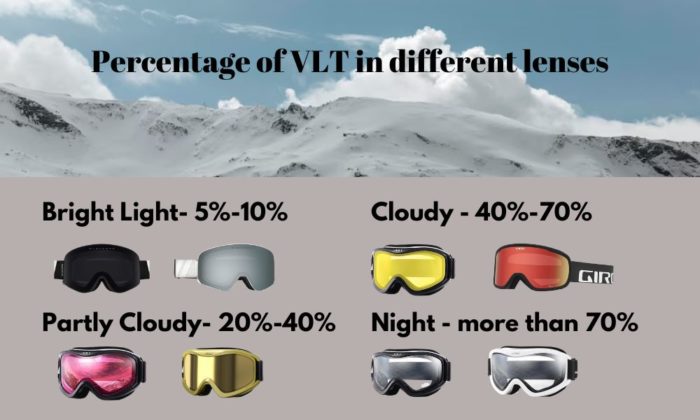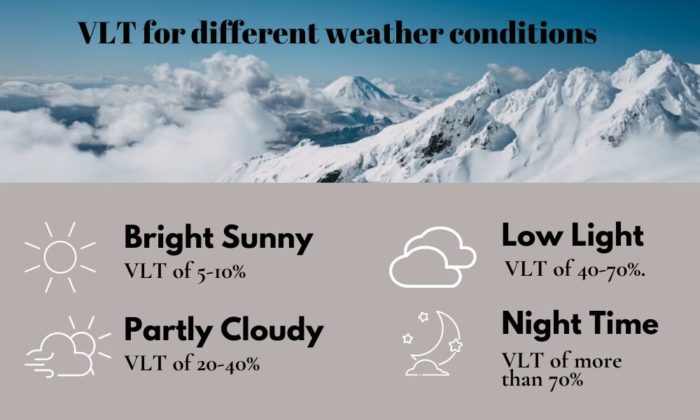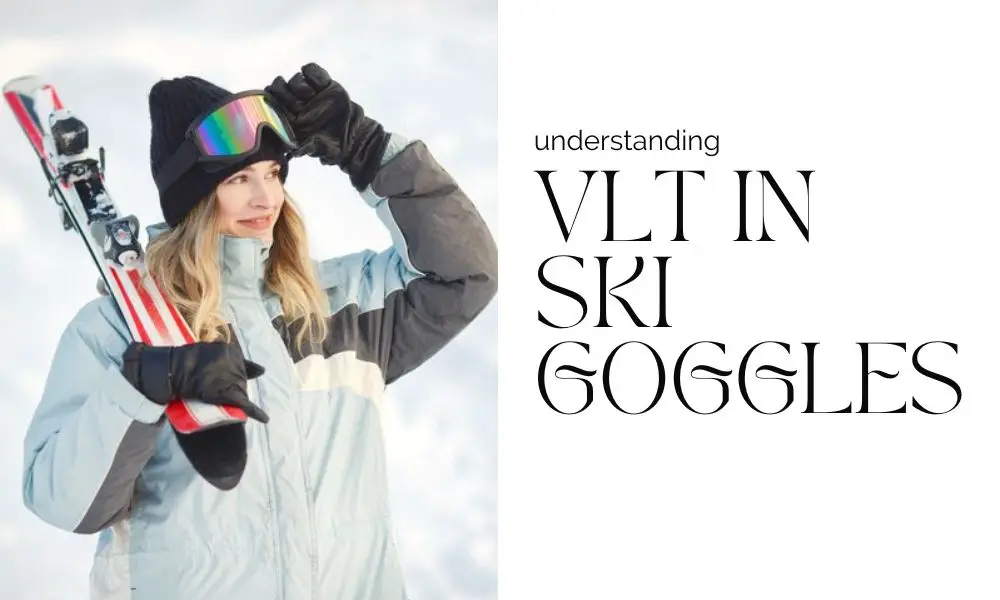Visible Light Transmission as we all call it, is an essential element present in ski goggles. There are people who have no idea about it but you can rest assured that you benefit a lot because of VLT!
No pun intended.
But you don’t have to worry about things like that anymore. That is because you are at the right place! In this article, you will know more about VLT technology. More than just the name.
How Does VLT Help In Ski Goggles?
Do your goggles work well in reducing glare and perfecting light conditions for you when you are in the snow? Of course it does, that is the responsibility of your goggles!
But if it does not, then something is wrong with them. The feature of VLT within your goggles might be going through major discrepancies, and that is not good!
Visible Light Transmission (VLT) is an important factor to consider when choosing ski goggles. VLT refers to the amount of visible light (the bright rays that strike your eyes when out in daylight) that can pass through the lens of the goggles. Some of the functions performed by the VLT feature are;
Light Conditions
It is never the weather you are facing while skiing. Do you agree with me or not? Activities like skiing and snowboarding involve a wide range of lighting conditions, from bright sunlight to dark skies and even low-light situations like dusk or fog. Here VLT level of the goggles helps you to determine which goggles will be giving you the best experience in what conditions.
Adaptation to Terrain
Even if the weather does not change, the terrains are definitely going to change, you know that. For example, skiing in areas covered with lush green and tall trees is bound to have lower light levels compared to wide-open slopes. Choosing the right VLT level will help you here because you obviously cannot see in a low-light environment with goggles suited for bright light!
Reduced Eye Fatigue

It will provide relief to your eyes for sure because you won’t have to squint your eyes anymore to see the path clearly! It effortlessly provides you with optimal quality vision so be relaxed, VLT is going to take care of it for you!
Let us move ahead with the article to help you choose the perfect goggles for you based on their VLT level.
What VLT Is Good For Ski Goggles In Different Weather Conditions?

After reading the lines above, you should already get it that different areas and lighting conditions need different levels of VLT. Just like you cannot wear party wear to a meeting with your boss, unless you are a supermodel, you cannot wear a lower percentage VLT goggle in a terrain that has natural low light. My goodness, that is dangerous!
When selecting ski goggles based on VLT, it’s essential to consider the typical weather conditions you’ll be skiing in. The VLT level of ski goggles plays a crucial role in determining how the goggles perform in different lighting and weather conditions on the slopes.
But it isn’t as difficult as you are perceiving it to be. Choosing the right VLT percentage is as easy as learning the 26 alphabets of the English language! You will only have to remember the theory of opposites in every stage.
Bright Light
Goggles with lower VLT percentages are designed for bright and sunny days. They help reduce the intensity of sunlight, preventing glare and protecting your eyes from harmful UV rays. The lenses here are darker in color (remember the theory of opposites?). By lower VLT percentage I mean 5%-10%. Your goggles VLT should not exceed this limit when under the sun. Never! And be mindful that it should neither be less than 5% too, because then the whole world is going to look dark to you after wearing the goggles.
Night
Goggles with higher VLT percentages are better suited for skiing at dawn or dusk. If we go by the opposites’ theory, then the lens here would be of a lighter shade and carrying a much heavier VLT percentage. During times when the sky is dark, a higher VLT percentage of more than 70% will guide you through the dark terrains. These lenses allow more light to enter, improving your visibility in situations with extremely low natural light.
Cloudy
Most people avoid overcast days for skiing, but there are people who enjoy it. For them, lenses with higher VLT percentages are the most suitable. The higher percentage refers to lighter lenses and 40%-70% in percentage levels. They work in the same way as night goggles do, just a bit less extreme because this is not a dark light but an overcast situation. The lenses here help enhance contrast and define objects more perfectly on the slopes.
Partly Cloudy
It is the weather where you cannot decide whether to carry your umbrella or not, or whether to take a cold shower or a hot shower. To be more precise, it is the weather when you can see the clouds but also the sun from behind the clouds. Lenses with medium VLT levels are suitable for partly cloudy days. They offer a balance between reducing light and clear optics. The VLT level in such goggles should be a little more than what is needed in extremely bright conditions but slightly less than what is needed in cloudy skies. That is, the typical percentage in such weather should be around 20%-40%.
I hope you understood the graph. Once you get the theory of opposites, you will get all of it. You might even master it and people will come to you for advice!
Is VLT Better When Higher Than Lower Or Vice Versa?

It is like asking if bread with jam is better or bread with Nutella is, ‘cause both are awesome!
It cannot be decided which one is better because, as I already have told you, the need for a certain VLT level is bound to change with changes in weather conditions. It completely depends upon you, and what weather you want to go out skiing that decides the VLT level that is suitable for you.
Is 10% VLT Too Dark?
Yes, it is quite dark but extremely suitable for bright. If you ski in very bright and sunny conditions, such as on clear days with intense sunlight, a 10% VLT is a blessing in disguise.
And let me make it clear to you, you need dark lenses on sunny days! Thus the 10% VLT lens which is generally brought for bright conditions necessarily is very very dark to cancel out the extremely shining rays from the sun.
Conclusion
So have you got the proper idea of VLT available in ski goggles? Do not complicate it, just remember the basics: dark lenses for bright light, and bright lenses for dark light. This chart is going to make it easier for you to understand.
Darker lenses equal lower VLT: For sunny and bright conditions. VLT may range from around 5% to 20%.
Medium dark lenses equal medium VLT: For partly cloudy to overcast conditions. VLT may range from around 20% to 40%.
Light-colored lenses equal higher VLT: For low-light, foggy, or snowy conditions. VLT may range from around 40% to 70% and more.
You might as well screenshot this part and you will be good to go!

